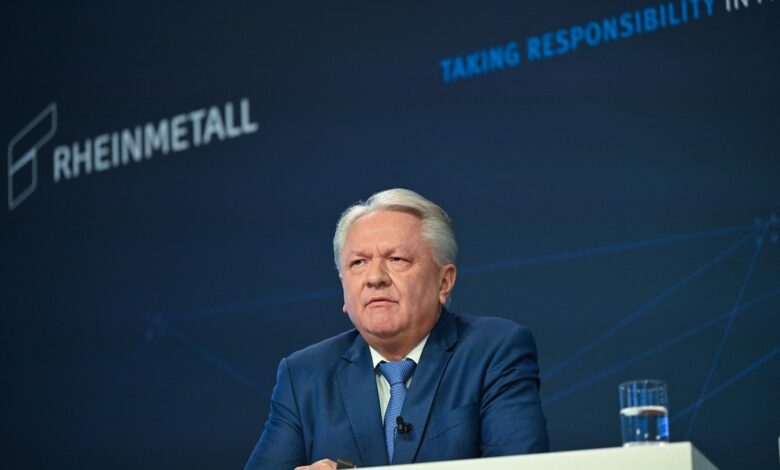U.S., Germany foiled Russian plot to assassinate CEO of arms manufacturer, officials say

Europe has been grappling with a rapid increase in Moscow-led sabotage attacks or plots as Russia ramps up efforts to undermine Western support for Ukraine. Poland, Britain, Lithuania, the Czech Republic and Germany have been hit with a string of arson or attempted arson attacks in recent months that Western officials have linked to Russian intelligence.
U.S., NATO and German officials would not comment on the specifics of the assassination plan, but made it clear they were increasingly concerned about Russia’s growing efforts to destabilize Western countries and undermine support for Ukraine.
“Russia’s intensifying campaign of subversion is something that we are taking extremely seriously and have been intently focused on over the past few months,” Adrienne Watson, spokesperson for the National Security Council, said in a statement. “The United States has been discussing this issue with our NATO Allies, and we are actively working together to expose and disrupt these activities. We have also been clear that Russia’s actions will not deter Allies from continuing to support Ukraine.”
GET CAUGHT UP
Stories to keep you informed
Jens Stoltenberg, NATO secretary general, told reporters on Thursday that the efforts were clearly aimed at intimidating Western nations out of supporting Ukraine, but said the hybrid attacks were only strengthening Western resolve. “There is a pattern, a Russian campaign organized by the [Russian] security services to conduct hostile actions against NATO allies,” he said. “These are not standalone incidents but part of a campaign.”
Russia’s campaign “isn’t going to change anything,” another NATO official said, speaking on the condition of anonymity to discuss sensitive matters. “NATO is committed to supporting Ukraine.”
German law enforcement already arrested two German-Russian men in April this year for plotting sabotage attacks on several U.S. facilities in Bavaria in southern Germany, and charged them with espionage. One of the suspects, Russian-born Dieter Schmidt, was spotted taking photos of a U.S. military garrison in Grafenwoehr where Ukrainian troops are trained to operate the M1 Abrams tank. Six Western security officials said Schmidt had discussed the potential targets, including the Grafenwoehr military base, with an individual with ties to Russia’s military intelligence service over an encrypted messaging app.
Germany’s Interior Ministry on Thursday declined to comment on the alleged plot against Papperger, but said in a statement that the country’s counterintelligence service had already been able to thwart possible acts of sabotage aimed at military support for Ukraine in April. “The German government will not allow itself to be intimidated by the Russian threats,” it said.
The expulsion of hundreds of suspected Russian intelligence officers serving under official cover as diplomats immediately after Russia’s invasion of Ukraine was aimed at curbing Moscow’s ability to conduct covert operations. But increasingly, officials said, Moscow is working through proxies, including those it recruits online.
A trove of Kremlin documents obtained by a European intelligence service and reviewed by The Washington Post have illustrated the breadth of Russia’s efforts to identify potential recruits. The documents showed that in July 2023, Kremlin political strategists studied the Facebook profiles of more than 1,200 people they believed were workers at two major German plants — Aurubis and BASF in Ludwigshafen — to identify employees who could be manipulated into stirring unrest.
Kremlin spokesman Dmitry Peskov did not respond immediately to a request for comment on Russia’s alleged involvement in the plot against Papperger. Earlier, he denied Russia was involved in expanding sabotage activity in Western territory and told The Post any such claims were “no more than a stoking of Russophobic hysteria.”
Papperger’s Rheinmetall has been crucial to Ukraine’s battle against Russia’s invasion, providing the Kyiv regime with 155mm artillery shells, military drones and tanks, and rapidly ramping up output to meet Kyiv’s growing demand. It is due to soon launch production of artillery shells in western Ukraine.






